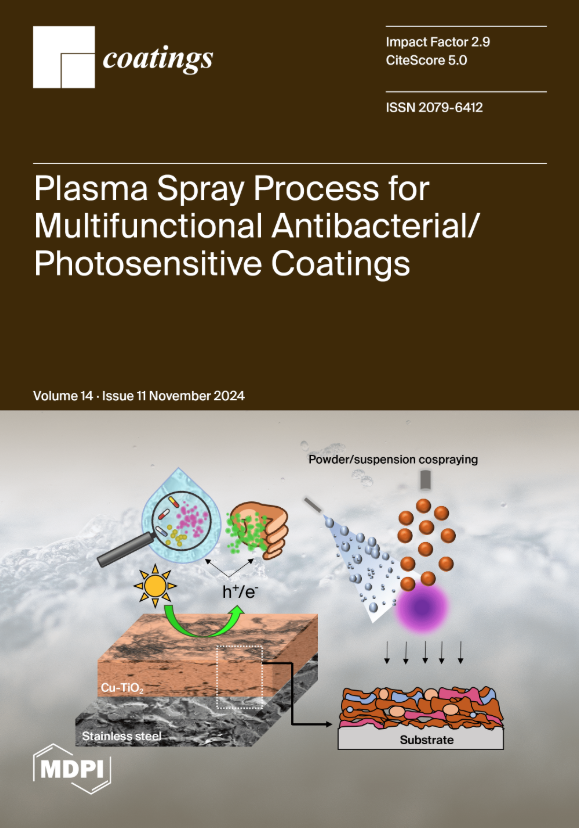Shelf-Life Extension and Quality Changes of Fresh-Cut Apple via Sago and Soy-Oil-Based Edible Coatings
IF 2.8
3区 材料科学
Q2 MATERIALS SCIENCE, COATINGS & FILMS
引用次数: 0
Abstract
In-demand fresh-cut fruits are highly perishable and require shelf stability. Starch, such as sago, is a naturally available polysaccharide with good gas barrier properties. The study aimed to develop an edible coating and examine the effect of its application on the quality parameters of fresh-cut apples. The coating solution was prepared with sago and soy oil in concentrations of 3, 4, and 5% and 0, 0.25, and 0.50%, respectively. Lecithin (0.50%) was used as an emulsifier and glycerol (1.5%) as a plasticizer. Coated fresh-cut apples were evaluated for physicochemical properties (TSS, pH, non-enzymatic browning index, moisture content, weight loss, headspace gas, and color attributes) during a 12-day shelf-life study at 4 °C. Sensory analysis was also performed to assess consumer acceptability, and microbial analysis to investigate its inhibiting effect against yeast and mold. Compared to the control, developed coatings reduced browning, respiration rate, moisture, weight loss, and microbial load in fresh-cut apples. The study indicates that the blend of 5% sago and 0.5% soy oil produced the best coatings which were most effective for retaining the original quality attributes and in extending the shelf life of apple slices for 12 days in storage at 4 °C.通过西米和大豆油基食用涂层延长鲜切苹果的货架期并改变其品质
需求量大的鲜切水果极易变质,需要货架稳定性。西米等淀粉是一种天然多糖,具有良好的气体阻隔特性。这项研究旨在开发一种可食用的涂层,并研究其应用对鲜切苹果质量参数的影响。涂层溶液由西米和大豆油配制而成,浓度分别为 3%、4%、5% 和 0%、0.25%、0.50%。卵磷脂(0.50%)用作乳化剂,甘油(1.5%)用作增塑剂。在 4 °C 下进行为期 12 天的货架期研究期间,对涂层鲜切苹果的理化特性(总悬浮固体含量、pH 值、非酶促褐变指数、水分含量、重量损失、顶空气体和颜色属性)进行了评估。此外,还进行了感官分析以评估消费者的接受程度,以及微生物分析以研究其对酵母和霉菌的抑制作用。与对照组相比,开发的涂层降低了鲜切苹果的褐变、呼吸速率、水分、重量损失和微生物负荷。研究表明,5% 的西米和 0.5% 的大豆油混合制成的涂层效果最好,能最有效地保持苹果片原有的质量属性,并能延长苹果片在 4 °C 下储存 12 天的货架期。
本文章由计算机程序翻译,如有差异,请以英文原文为准。
求助全文
约1分钟内获得全文
求助全文
来源期刊

Coatings
Materials Science-Surfaces, Coatings and Films
CiteScore
5.00
自引率
11.80%
发文量
1657
审稿时长
1.4 months
期刊介绍:
Coatings is an international, peer-reviewed open access journal of coatings and surface engineering. It publishes reviews, research articles, communications and technical notes. Our aim is to encourage scientists to publish their experimental and theoretical results in as much detail as possible. There is no restriction on the length of the papers. Full experimental and/or methodical details must be provided. There are, in addition, unique features of this journal:
* manuscripts regarding research proposals and research ideas will be particularly welcomed
* electronic files or software regarding the full details of the calculation and experimental procedure - if unable to be published in a normal way - can be deposited as supplementary material
 求助内容:
求助内容: 应助结果提醒方式:
应助结果提醒方式:


